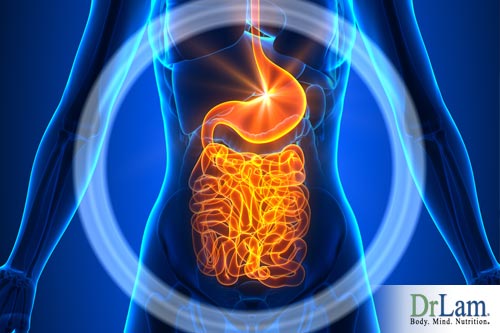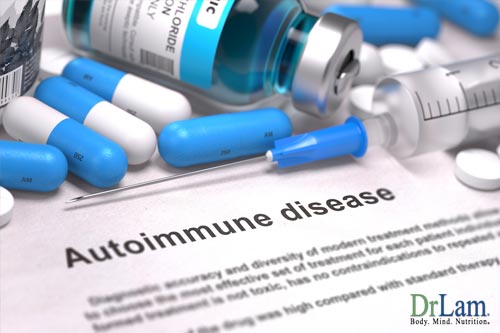
 There’s been a trend towards adopting an anti-inflammatory diet, and this is with good reason.
There’s been a trend towards adopting an anti-inflammatory diet, and this is with good reason.
More and more, inflammation is appearing as the root cause of many health complications, including obesity. It creates the kind of environment that weakens the body’s defenses while triggering or worsening illnesses. Even hormonal health and cardiovascular health are linked to inflammation.
However, not all inflammation is created equal. Acute inflammation is actually a very important mechanism to protect your body from harmful attacks, such as bacterial or viral infections. It is only when this mechanism is constantly triggered that you then become susceptible to chronic disease.
Symptoms of acute inflammation that don’t go away are a sign of chronic inflammation. These include swelling, redness, stiffness, and joint pain, as well as agitation and moodiness. Also, some symptoms of chronic inflammation are abdominal pain, pain of unknown origin, depression, and fatigue.
If you find yourself experiencing these symptoms, it’s time to go to a doctor and get tested for inflammatory markers such as C-reactive protein (CRP) and homocysteine levels.
The CRP blood test will measure how much C-reactive protein is in your system, which indicates the level of inflammation present due to infections or illnesses related to inflammation, like lupus and cancer. It does not show where the location of the inflammation is, however.
Although high homocysteine levels are traditionally used as markers of cardiovascular risk, they are now also being used as markers of inflammation. Homocysteine is an amino acid commonly found in the blood. It is usually associated with low levels of vitamins B6, B12, and folate, as well as with meat consumption.
In addressing these issues, it’s important to find a doctor who will investigate these markers and help you take a more holistic approach to the root cause of your inflammation, rather than just addressing symptoms.
Frequently, that root cause is in the gut.
Ancient medical systems didn’t focus on the gut as the epicenter of overall health without cause. Practitioners of Traditional Chinese Medicine and Ayurvedic Medicine understood the link between inflammation and gut health, and how these two affect every other system in the body.
In fact, if a person begins exhibiting signs of gastrointestinal problems, these practitioners would predict that sooner or later in this person’s life, a disease will develop.
Modern medicine is beginning to catch up with this. Recently, much more research has focused on the gut’s microbiome and the way it affects inflammation and overall health.
This also drastically affects the health care system. While cancer costs $57 billion a year, autoimmune diseases cost around $100 billion. Autoimmune disease is an eventuality when chronic inflammation is left unaddressed.
The inflammation-hormone relationship is a key point to understand as well, especially regarding women’s health, but also with regards to adrenal fatigue and the stress-gut-inflammation link. However, you can begin taking control of these issues through an anti-inflammatory diet.
 Inflammation almost always lies at the root of autoimmunity, which occurs when the immune system attacks healthy cells, mistaking them for foreign bodies. No matter what type of autoimmune condition is present, inflammation usually is also.
Inflammation almost always lies at the root of autoimmunity, which occurs when the immune system attacks healthy cells, mistaking them for foreign bodies. No matter what type of autoimmune condition is present, inflammation usually is also.
The rise in autoimmunity parallels the rise in obesity, and both are growing worldwide. 35% of global populations are obese, with half of Americans over 50 years of age considered clinically obese. The National Institutes of Health indicates 23 million Americans affected by autoimmune disease, while other sources enumerate 50 million Americans.
So what is the link between obesity, inflammation, hormones, and autoimmunity?
Obesity creates an environment in the body that can be described as “pro-inflammatory”. More and more, research is also showing obesity as a disease of inflammation.
Up until recently, adipose tissue, or fat, was thought to serve only as storage for triacylglycerols when there was an excess of energy. That way it could release fatty acids when there was a need for energy in the system. But now, there’s evidence that it has a more active role in endocrine and metabolic functions.
Adipose tissue can either be subcutaneous (underneath the skin) or visceral (between the organs). It secretes adipokines, which are a type of cytokine that circulate like hormones, signaling information between different organs.
Cytokines are proteins, peptides, and glycoproteins that help cells communicate in an immune response. They stimulate cells to move to areas of inflammation and injury. Inflammatory cytokines are what can induce the process of autoimmunity. For example, with asthma, the cytokines trigger the immune system to attack the airways.
Different types of adipokines help regulate glucose and insulin, and in turn affect leptin and insulin levels, which are indicative of the presence or absence of inflammation.
Adipokines, such as leptin and adiponectin, are involved in pro and anti-inflammatory responses and insulin resistance. Interestingly, with leptin for example, a pro-inflammatory environment is created in the body both when leptin is too high and when it is too low.
Leptin is the hormone that signals satiation so you don’t keep eating constantly. Adiponectin is the hormone that helps regulate glucose and the breakdown of fatty acids.
If adipokine levels are dysregulated, this can be a marker for obesity, cardiovascular disease, and type 2 diabetes. With obesity, pro-inflammatory adipokines are a factor in triggering insulin resistance.
This means that the insulin resistance that comes with obesity is partly the result of the dysregulation of adipokines. This is why many practitioners now focus on inflammation in patients who come to them with weight problems, and propose the patient adopts a diet that helps with weight loss and is anti-inflammatory.
 With the knowledge that many autoimmune conditions begin with inflammation, it is possible to dig a little deeper and see how the gut plays the main part. The gut’s microbiome is the mediator of this process.
With the knowledge that many autoimmune conditions begin with inflammation, it is possible to dig a little deeper and see how the gut plays the main part. The gut’s microbiome is the mediator of this process.
The gut microbiome, sometimes called gut flora, is the community of microorganisms that live in the gut. They number around 100 million.
There are ten times more bacteria in the gut than in the rest of the human body, and the gut’s genome is one hundred times larger than the human microbiome. The gut’s microbiome contains up to 3 million unique genes coming from around 1000 different species of microorganisms.
This will most likely have many implications in the future, as epigenetics is a growing field. But even then, even if you have all of your genetic variations and data available, with a list of all of your Single Nucleotide Polymorphisms (SNPs, or “snips”), there is still the question of how these snips are activated. Once again, the answer is that this happens in the gut.
The microbiata of the gut has several important functions. First, the healthy bacteria present in the gut help resist invasion by harmful microbes. They also ferment non-digestible material passing through the gut, retrieving energy and nutrients that otherwise would have been wasted.
The relationship between gut flora and the immune system is another important factor.
The gut contains two thirds of the body’s immune tissues. In fact, one of its main functions is the inflammation response. The gastrointestinal (GI) tract’s immune system is composed of gut-associated lymphoid tissue (GALT), which is mainly concentrated in the small intestine.
The GALT has many types of immune cells, such as white blood cells, that attack any harmful invaders entering the GI tract. Gut flora, during the early stages of an infant’s development, begins to form a supportive relationship with the immune system.
The immune system, gut microbiata, and intestinal permeability are factors that, together, play a large part in gastrointestinal disorders and inflammation. When there is an imbalance in the gut flora, called dysbiosis, it opens up the door for many problems, including dysregulation of the immune system and the inflammation response.
Intestinal permeability is likely to follow dysbiosis, leaking particles into the bloodstream that shouldn’t be there. The immune system sees these particles as a threat and mounts an attack, causing inflammation.
This is why one of the first things to do when dealing with inflammation and autoimmune disease is to avoid or reverse dysbiosis. Starting an anti-inflammatory diet can support this.
A large part of women’s health is dependent on hormones. Imbalances in sex hormones such as estrogen and progesterone have been associated with the immune response and inflammation. An imbalance in even one hormone can have a cascading effect since these hormones are linked through the hormonal axes of the body.
 This is why chronic inflammation often accompanies key hormone transitions such adolescence, pregnancy, perimenopause, and menopause in particular. It has been shown that all four transitional phases can induce changes in genetics.
This is why chronic inflammation often accompanies key hormone transitions such adolescence, pregnancy, perimenopause, and menopause in particular. It has been shown that all four transitional phases can induce changes in genetics.
For example, a woman going through perimenopause, usually between the ages of 38 and 42, might develop an autoimmune disease. However, when she transitions to menopause, she may find herself with a different autoimmune condition. She may have started out with inflammatory bowel disease (IBD), but then when menopause begins, develop osteoarthritis. Both of these conditions have inflammation at the root, going back to the gut.
This is corroborated by the fact that women with digestive issues often have a more difficult time during menopause. Weight gain, osteoporosis, and acne can all be present at this stage.
Another phenomenon observed is that oftentimes after pregnancy, whether a few weeks or a year later, women will suddenly start to suffer from autoimmune conditions like lupus or rheumatoid arthritis.
What all of that means for you is that, if you’re having digestive issues or chronic inflammation, check for any issues with your hormones. Also, if you’re going through a hormonal transition, make sure you’re keeping an eye on inflammation and making gut health a priority.
Stay aware of any digestive symptoms you have, no matter how seemingly unrelated to your condition.
Some specific things to look out for are constipation, irritable bowel syndrome (IBS), and gastroesophageal reflux disease (GERD). These are early warning signs to consider, especially when thinking about taking hormones or getting help for a hormonal condition. Also, maintain a diet that is anti-inflammatory and supportive to hormonal health.
It can also help to pay special attention to where in your body fat is accumulating.
Central obesity, or fat concentrated around the belly, has its own set of harmful effects on health. It’s not so much about the number on the scale, as it is about how much abdominal fat that is a factor in things such as cardiovascular disease, cancer, diabetes, fatty liver, osteoarthritis, and depression.
The Body-Mass-Index (BMI) is the standard of measuring body fat, but it doesn’t take into consideration the way fat is distributed throughout the body. To have a more accurate reading of belly fat, there are a couple of other methods of testing.
One of those is the waist-to-hip ratio. You can even try it right now.
To find out your waist-to-hip ratio, take a measuring tape, relax your belly muscles, and then measure your waist around the navel point and your hip around the widest point. Then divide the waist measurement by the hip measurement and you have the ratio. In women, over 0.85 is a risk factor, and it is advisable to get that ratio down.
You can also just measure your waist only.
 Put your feet together. Make sure your belly is relaxed, and the tape is wrapped around your waist as evenly and accurately as possible. If the measurement exceeds 35 inches, you’re at high risk for health issues. If it’s between 31.5 and 35, you’re at moderate risk. If it’s under 31.5, you’re at low risk.
Put your feet together. Make sure your belly is relaxed, and the tape is wrapped around your waist as evenly and accurately as possible. If the measurement exceeds 35 inches, you’re at high risk for health issues. If it’s between 31.5 and 35, you’re at moderate risk. If it’s under 31.5, you’re at low risk.
But it’s advisable that you have these measurements confirmed by a professional, who might do other kinds of tests as well.
An important question is, why is belly fat worse than other kinds of fat?
For the answer, we can look back to the subcutaneous vs. visceral fat discussion. As mentioned, subcutaneous fat is that which is found right under the skin. It’s still problematic, but it’s not as much as visceral fat, which is found inside the abdomen and in between the organs.
There are a couple of reasons why visceral fat is more dangerous.
First of all, these specific fat cells release free fatty acids into portal circulation that feeds into the liver. The fatty acids build up in the liver as well as in other organs such as the pancreas and heart. When this happens, these organs begin to dysregulate, causing issues with blood sugar, cholesterol, and insulin.
Belly fat also increases cytokine production. Cytokines are molecules that indicate or trigger a pro-inflammatory state. They also get in the way of other hormones, including those that deal with mood, appetite, and stress.
Visceral fat is associated with the body’s stress response . It raises blood pressure, blood sugar, and cardiovascular health risks.
The connection between Adrenal Fatigue Syndrome (AFS), the NeuroEndoMetabolic (NEM) Stress Response, inflammation, and central obesity can be summed up in one word. Stress.
The NEM is the body’s overall strategy for dealing with stress. It is composed of six circuits, each one with organs and systems working together as a unified front against the ravages of stress, and each circuit also working with the other five.
These circuits are the hormone response, the metabolism response, the cardionomic response, the neuroaffective response, the inflammation response, and the detoxification response.
The adrenal glands are part of the hormone response, and they are the body’s first defense against stress. They are two small organs that rest on top of the kidneys and produce over 50 different hormones. Their main weapon in the fight against stress is the hormone cortisol.
Cortisol is responsible for maintaining heart and blood vessel functions, regulating blood pressure, suppressing the immune system, and neutralizing inflammation.
Although stress is a natural part of life and your body is fully equipped to handle it, the problem arises when it becomes chronic. With chronic stress, whether physical, mental, or emotional, the adrenal glands and the overall NEM Stress Response are overworked.
 In the beginning stages of AFS, cortisol production increases in order to meet the growing demand. In later stages, when the adrenals are exhausted, cortisol output drops. Symptoms of AFS include weight gain, fatigue, sleep disturbances, brain fog, lowered immunity, PMS, low libido, anxiety, mild depression, memory loss, food sensitivity, and heart palpitations.
In the beginning stages of AFS, cortisol production increases in order to meet the growing demand. In later stages, when the adrenals are exhausted, cortisol output drops. Symptoms of AFS include weight gain, fatigue, sleep disturbances, brain fog, lowered immunity, PMS, low libido, anxiety, mild depression, memory loss, food sensitivity, and heart palpitations.
Interestingly, this dysregulation of cortisol has an important effect on abdominal fat.
The entire body contains cortisol receptors. However, the central abdomen contains a very high concentration of them as compared to the rest of the body. When cortisol production increases during the early stages of AFS, the cortisol receptors in the abdomen are continuously stimulated to store more and more fat.
This causes fat around the body to be redistributed and focused on the belly.
That is not the only link. Fat is also a part of the process of cortisol production. Cholesterol produced by the adrenal glands, intestines, liver, and reproductive organs is stored in adipose tissues until there is a need for steroidal hormones.
The cholesterol is then converted into pregnenolone, which in turn is converted into progesterone or DHEA. The pituitary gland then makes adrenocorticotropic hormone, which signals the adrenal glands to take the progesterone and turn it into cortisol.
Each step of this process needs energy, and so to make it less energy consuming, the fat that contains the needed building blocks of cortisol are moved closer to the organs that convert cholesterol to cortisol, mainly in the abdomen.
Although that does help the adrenal glands to secrete more cortisol, the fat that accumulates around the belly to facilitate this process is detrimental to health.
Meanwhile, the belly fat that’s piling up is now affecting the thyroid and pancreas, triggering insulin resistance and hypothyroidism. The consistently high cortisol is also adding to insulin resistance and messing with delicate metabolic processes.
Now, things are getting dangerously close to metabolic syndrome, with its own set of symptoms that are quite similar to AFS symptoms. These include tiredness, weight gain, feeling sluggish after eating, high blood pressure and cholesterol, brain fog, and signs of aging faster than others.
Metabolic syndrome can set the stage for a decline in overall health and the development of cardiovascular problems, diabetes, and even Alzheimer’s down the road.
A big issue affecting women’s health in modern living is hormonal imbalance in general, and estrogen dominance specifically.
Estrogen is a growth-stimulating female hormone that increases body fat, thickens the endometrial layer in the uterus, and makes the breasts grow. Ideally, it should be in balance with progesterone.
Progesterone helps convert fat to energy and maintains the secretory endometrium. It protects against endometrial cancer and breast cancer, as well as fibrocystic breasts.
However, the toxicity in the environment and modern lifestyles exposes you to xenoestrogens, which act like estrogen after entering the system. These cause estrogen levels to become higher than progesterone levels. This is why it’s called estrogen dominance.
 Xenoestrogens can come from plastics, solvents, pesticides, and other such sources that are best avoided. Eating organic might be a good way to avoid this imbalance.
Xenoestrogens can come from plastics, solvents, pesticides, and other such sources that are best avoided. Eating organic might be a good way to avoid this imbalance.
Estrogen dominance symptoms include swollen breasts, endometriosis, irritable mood, fibroids, irregular periods, inflammation, PCOS, autoimmune disorders, low libido, hair loss, brain fog, and many others.
Health problems such as liver congestion and AFS can also cause or aggravate estrogen dominance.
With AFS, the “fight or flight” response is more frequently triggered, and it releases insulin to help cells take in glucose from the blood to get more energy. This excess insulin makes the ovaries produce androgens (male hormones) and more estrogen.
The relationship between estrogen and inflammation is a bit complex, as estrogen can have both an anti-inflammatory and pro-inflammatory effects. There are many factors involved, and the research is still underway. Hormone imbalance of any kind does appear to create a pro-inflammatory state in the body.
It might seem impossible to deal with hormonal issues, inflammation, and autoimmune disease all at once, but the good news is that the adjustments needed for one will improve the rest. This begins with healing the gut, shedding extra weight, and eating a diet that is anti-inflammatory and supportive of hormonal balance.
It’s no secret that, in general, we’re getting heavier. The typical diet has become much more unhealthy, with processed foods, refined sugar, high fat, low fiber, and unbalanced portions. Fast food chains on every corner make it cheaper and easier to eat out than to cook fresh, healthy meals at home.
Many jobs are now desk-and-computer focused, with barely any need to do physical activity as part of a normal routine. You have to actually set time aside to work out, rather than it being a part of your day, and not many people feel they have the time or energy to do this with such busy schedules.This lifestyle increases stress and inflammation, and both of these factors are connected to diet and exercise.
This is why a holistic approach is the best way to make sure all your bases are covered, starting with a diet that is anti-inflammatory and good for weight loss as well.
If you have any hint of dysbiosis, healing the gut should also be the first priority. Ensuring a healthy and vibrant microbiome will help with everything else, from clearing up digestive issues and increasing immune efficiency, to bringing down inflammation and absorbing the nutrients you need.
If you have AFS, it’s a good idea to get some anti-inflammatory dietary coaching that can help heal your gut and support your adrenal glands. As you begin to recover, you will find that just as they both aggravated each other, when one grows stronger, it supports the other as well.
Another top priority here is to reduce and manage stress. There are a number of ways you can do that no matter what condition your health is in.
 If your stress is mental/emotional in nature, consider therapy, meditation, group support, journaling, taking walks in nature, and allowing yourself a breathing gap between an emotional trigger and your response. The more you train yourself, the more equilibrium you are able to bring to your mind and emotions, even if life situations get challenging.
If your stress is mental/emotional in nature, consider therapy, meditation, group support, journaling, taking walks in nature, and allowing yourself a breathing gap between an emotional trigger and your response. The more you train yourself, the more equilibrium you are able to bring to your mind and emotions, even if life situations get challenging.
Getting rid of physical stressors is very important as well. These methods can help relieve stress on your body:
More on the types of foods and eating habits to cut down on is explained in the anti-inflammatory diet protocol outlined below.
With all of these suggestions, don’t overwhelm yourself with too many changes at once, as this will add to your stress and will not be a sustainable solution. You may consider getting lifestyle coaching to help you transition to a healthier daily routine.
Also, for each of the above points, be sure to change things gradually and with a good understanding of how it will affect your particular condition.
For example, if you have AFS and you’re considering cutting down on caffeine, it’s important to do this very slowly, while supporting your body with a lot of rest and a good anti-inflammatory diet. Otherwise, you may find yourself in a difficult withdrawal. You might consider first attending to the adrenals, before attempting to quit caffeine completely.
As for nutrition, a diet that is both anti-inflammatory and supportive of adrenal function is a great way to ensure you give yourself the best chance for lasting recovery.
There are two things to take into consideration when crafting your anti-inflammatory diet. What to avoid, and what to add.
Let’s begin with what to avoid.
One option is to try an elimination procedure to figure out what foods you are allergic or sensitive to.
To try food elimination, stop consuming certain well-known allergenic foods, such as gluten and dairy. Then add them slowly back, one by one, into your anti-inflammatory healthy diet, waiting a few days after each to see if you start to feel any signs of discomfort. If you do, this may mean that your body does not tolerate this specific food very well.
The following is a description of some inflammatory foods and guidelines to loosely follow, but as always, the best approach to this is an individual one. Listen to your body and enlist the help of a holistic nutrition expert who can create a blueprint specifically for your condition and needs.
The first goal in an anti-inflammation diet is to stabilize blood sugar levels. This is not just for diabetics.
 When your blood sugar is all over the place, your body takes that as a signal that there’s something off. Stable blood sugar is indicative of a steady and healthy supply of food, while highs and crashes signal an irregularity in your environment and possibly a survival threat. Your immune system readies itself, and your entire system is on alert, which is a stressor on the body.
When your blood sugar is all over the place, your body takes that as a signal that there’s something off. Stable blood sugar is indicative of a steady and healthy supply of food, while highs and crashes signal an irregularity in your environment and possibly a survival threat. Your immune system readies itself, and your entire system is on alert, which is a stressor on the body.
To regulate blood sugar, it’s important to reduce your intake of refined sugar and foods that are very high on the glycemic index. These spike blood sugar levels. These foods and drinks make your body rush to produce more insulin, which then makes your blood sugar crash. This can leave you tired, cranky, and agitated. It also causes inflammation through the insulin-inflammation link.
Eating whole fruits instead of fruit juice is one switch that can help a lot, as the fiber in fruit helps the fructose go into the bloodstream gradually rather than suddenly, as with juice.
If you have AFS, you will also need to take care what kind of fruits you choose. For example, bananas, oranges, raisins, dates, and dried figs are high in potassium, which can worsen the sodium-potassium imbalance in AFS. Also, it’s better not to eat fruits early in the morning in order to avoid blood sugar crashes. These worsen the fatigue already present with AFS.
The next thing to consider is your omega-3 to omega-6 ratio. Ideally, intake of the two should be equal. Unfortunately, due to the amount of polyunsaturated vegetable oils consumed in the typical diet, this ratio is way off.
Omega-6s are off the charts in fried foods, fast foods, and in many processed and packaged foods. At the same time, it’s much more difficult to get enough omega-3s, which are essential to heart and brain health.
Foods high in trans fats are also something to avoid, as they increase LDL levels, the type of cholesterol that can trigger inflammation in the arteries.
Lastly, it’s important to avoid toxicity in your food and home environment as much as possible.
Certain types of seafood are so high in mercury, for example, that it’s better to go without. Certain cleaning products, highly processed foods, and certain medications and supplements also add to the toxic load in your body and cause even more inflammation. Natural, organic, and fresh foods and products should be your goal whenever possible.
Now, it’s time to add all the good guys into your anti-inflammatory diet.
First, consider taking a probiotic to support your gut flora. However, first check with a medical professional about what type and concentration to use, because you can actually experience an adrenal crash and constipation from overdoing it. You want a dose that gives your gut enough support, yet is easily cleared from your body afterwards.
Next, take a high-quality omega-3 supplement and increase your intake of foods that contain it naturally, such as oily fish and flax seeds. Just make sure that you eat fish from organic fish farms or fish caught in low toxicity waters such as the Pacific.
 As for oils, try rapeseed or coconut oil for cooking, or high quality ghee, all in small amounts. Olive oil is great for dressings but not to cook on high heat with.
As for oils, try rapeseed or coconut oil for cooking, or high quality ghee, all in small amounts. Olive oil is great for dressings but not to cook on high heat with.
You might also just want to reduce the amount of oil you use in cooking. For sautéing and light frying, water does just as well as oil. You can add other sources of fat that are healthy and satisfying, such as avocadoes, to balance your micronutrients after lowering oil consumption.
It’s important that you eat at regular intervals throughout the day instead of haphazardly. Fiber and protein rich meals are a great way to feel full and avoid blood sugar spikes and crashes.
Fresh fruits and vegetables are staples to any healthy nutrition plan, but especially so for an anti-inflammatory diet. The more colorful and fresh they are, the better. Make sure that some of your fruits and vegetables are raw, so they can provide your gastrointestinal system with enzymes that help with digestion.
You can also consider digestive enzyme and HCL supplements to help reduce the stress on your digestion. But, again, as with any supplementation, you should consult a professional first. There are some enzyme supplements that work well for AFS, yet worsen inflammation.
After covering the basics, you can get creative. Start to sprinkle your anti-inflammatory diet with nuts, seeds, berries, and sea vegetables.
Certain herbs and spices are powerfully anti-inflammatory. These are also a great idea to use, and they can even help cut down on too much salt and sugar, as they provide deep flavors to any dish. They include:
Although it may seem a little overwhelming to take up a new lifestyle you’re not used to, just like any big change, if you take it one step at a time, you can make a sustainable and healthy transformation. Eventually you can prevent, support, and even reverse many of the ailments that are caused by inflammation.
There are hundreds of healthy and delicious recipes to learn and resources such as books, articles, videos, and support groups to help keep you on track with your anti-inflammatory diet, weight loss, and hormonal rebalancing.